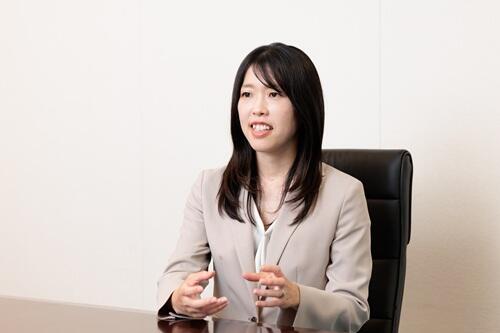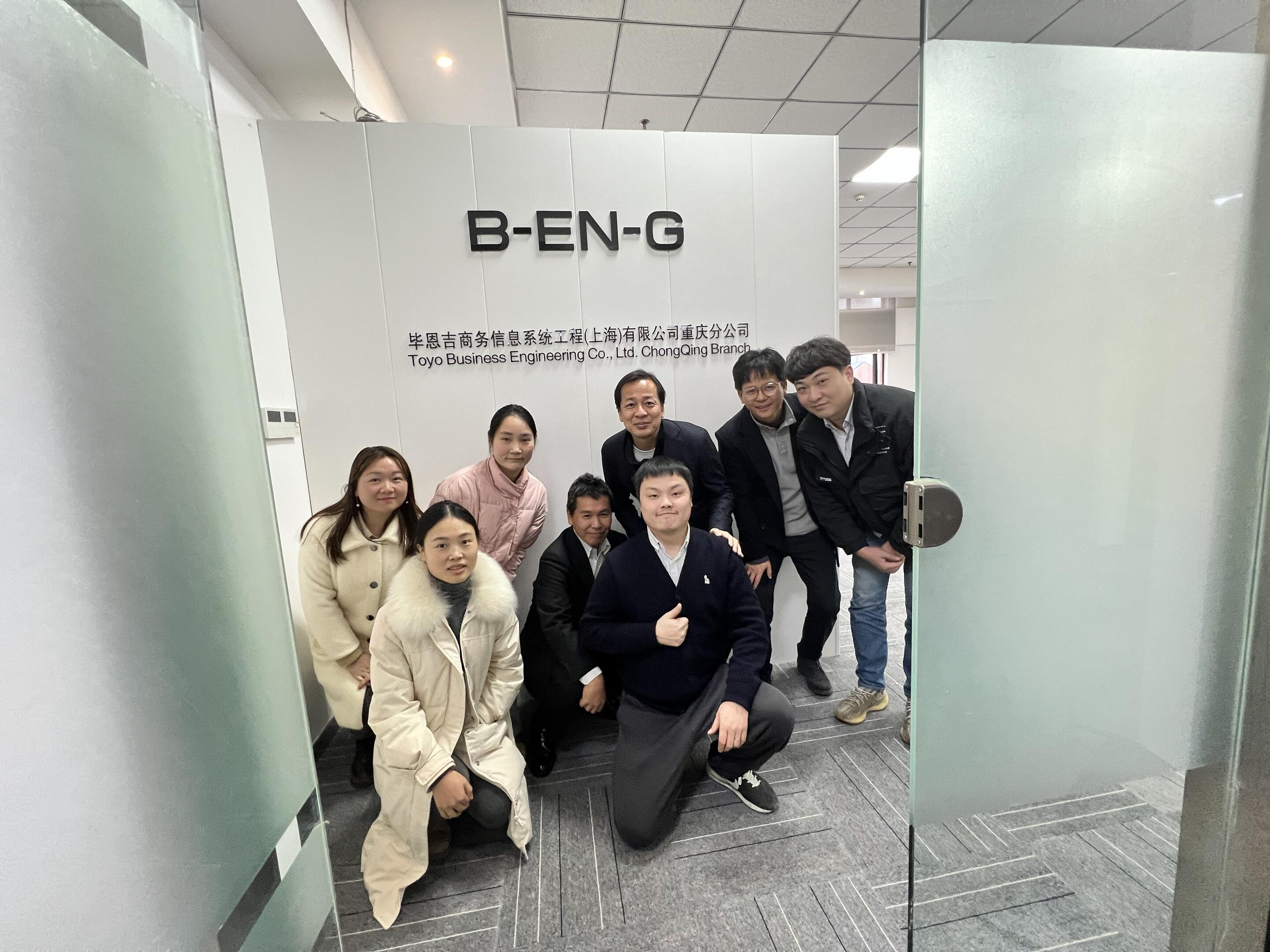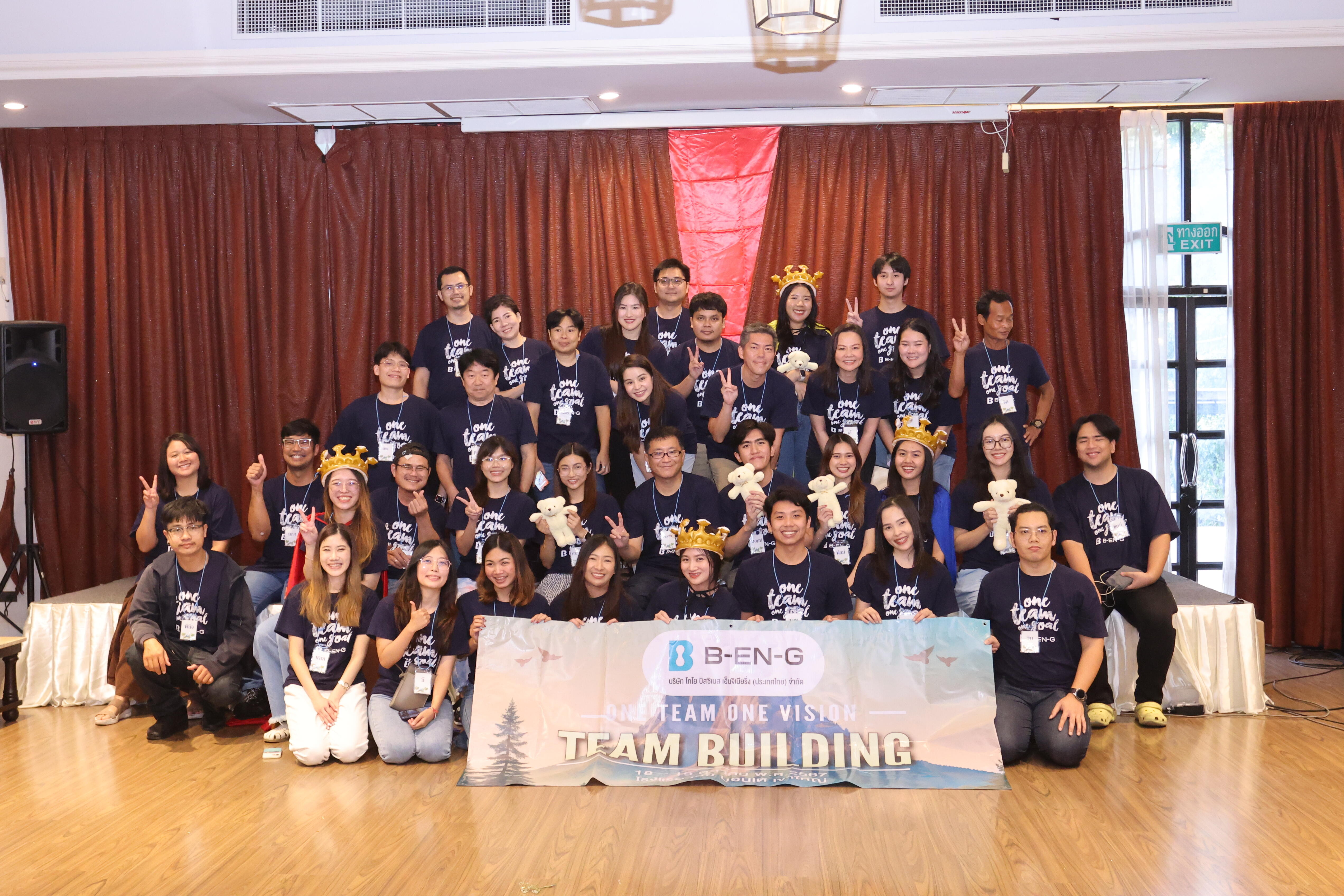Speaker: Business Engineering Corporation
Solutions Business Headquarters
Digital Business Headquarters AI & Data Value Design Department
Deputy manager
Satoka Moriya
In today's business environment, data is a central element of corporate strategy, and how well it can be utilized determines success or failure. Moriya Reika, who has been with the company for 11 years, is in charge of this role at Business Engineering (hereafter referred to as B-EN-G), which supports companies in utilizing data. Armed with the statistical skills she acquired during her graduate school years and the manufacturing industry knowledge she has gained through projects since joining the company, she is active as a data utilization consultant. Combining IT utilization and business improvement consulting, she has led multiple data utilization projects to success through meticulous planning and project management, earning high praise from the clients she works with.

Steady advancement at a company where you can find opportunities to thrive
Moriya's strength lies in his ability to determine a goal, find a methodology to reach it, set a route to reach it, and steadily achieve it. He gained experience in data analysis at graduate school and found it fascinating not only to discover causes but also to delve into and understand processes. He then decided to become a consultant making full use of IT and data analysis. He received offers from several companies, but out of all the companies, Moriya chose B-EN-G to realize his potential.
"My impression of B-EN-G was that it was a company with a select few employees, where even young employees could take on projects at their own discretion and thrive. There were also many talented senior colleagues, so I thought I would be able to put myself to the test. It was also great that my statistical analysis skills were properly recognized." (Moriya)
His career at B-EN-G began as a developer in an SAP BPM implementation project. He was then assigned as a cost management consultant to an SAP ERP implementation project for a major equipment manufacturing company, where he experienced everything from requirements definition to design, development, testing, and release over a period of about two years. By taking on the entire system implementation process, he steadily deepened his understanding of business processes.
In the next SAP ERP implementation project for a major food company, he was selected as the team leader, and completed the large-scale project, which also took two years, right up to the release. In the following project for a major cosmetics company, he expanded his field of activity even further, being selected as the project leader (PL) midway through the project and completing it to the end. Through these experiences, he not only gained a deep understanding of the business, but also honed his leadership skills to lead a team.
At this point, the company was planning to continue training Moriya as an SAP project manager (PM). However, as he gained experience in projects, he began to feel a stronger desire to make more effective use of business data for management and the field. Around that time, talk arose about setting up an organization within the company to provide consulting on data utilization.
"Through my experience with the project, I began to question why the data accumulated within companies was not being fully utilized. Although digital transformation is progressing, much of it remains within departments, and the reality is that there are still few examples of company-wide data utilization. I was convinced that advanced data utilization was possible in large manufacturing companies, and I wanted to help make this a reality, so I volunteered to join the data utilization department." (Moriya)
His first data utilization project received high praise from clients and spread within the company
His sincere passion reached the company, and he became a key member of the launch team, from which point Moriya went on to become a highly successful data utilization consultant.
His first project as a data utilization consultant was to develop a data analysis environment to detect anomalies in the manufacturing process at a major pharmaceutical manufacturer. B-EN-G was approached because they wanted to achieve more advanced anomaly detection through multivariate analysis using models, and Moriya joined the project as PM.
With no prior knowledge of the pharmaceutical industry, Moriya began by gaining an understanding of the industry, then sought the opinions of experts, carefully read reference papers, and attended academic conferences to gain knowledge. From there, he began reviewing analytical tools and methods, repeatedly analyzing manufacturing processes and considering improvement measures.
Previously, anomaly detection was limited to univariate analysis of less than 30 important items out of approximately 1,200 types of business process-related data. Moriya aimed to detect anomalies by capturing "breakdown in correlation" between multiple variables, and proposed analyzing all data after simplifying the data through dimensionality reduction*.
"As a result of our verification, we were able to obtain insights that led to root cause analysis. We concluded that unsupervised principal component analysis (PCA) would be effective in the pharmaceutical manufacturing process, where anomalies rarely occur, and through several efforts we were able to establish an analytical method suitable for business data." (Moriya)
This initiative started small, focusing on one product on a specific line in one factory, but the client's manager, impressed by the results of the initiative, expanded it to multiple lines and factories, and simultaneously announced it in an industry magazine.
(Note)
*Dimensionality reduction is a technique for reducing the number of variables (number of dimensions) in data while preserving the meaning and structure of the data as much as possible.
Leading various data utilization projects to success
This initial success led to further projects, and Moriya was subsequently assigned as the analysis leader for a project with a major consumer goods company. The company's supply and demand team was using the demand forecasting functionality of SAP IBP, SAP's planning solution, to create sales forecasts, but was experiencing issues with not achieving the expected results. The likely cause was that the model implemented in the tool was being used as is, preventing the company from utilizing data in a way that suited the company. Moriya proposed a multiple regression analysis method to address this issue. Building an analytical platform on the cloud, Moriya entered delivery records, similar product data, television advertising volume, competitor prices, and government statistical data such as the number of COVID-19 cases, which was then widespread, into formulas as variables to create hundreds of thousands of models. He then used machine learning to select the optimal model, significantly improving forecast accuracy.
In this case, Moriya's team management skills and ability to drive the project forward were highly praised by the client, in addition to his choice of methodology.
"At first, the client was skeptical, but through repeated communication about twice a month, we simultaneously improved the accuracy of our predictions and established a model management method that could withstand operational use. We set a challenging goal of improving the accuracy of predictions for 80% of the business products we were responsible for, and by setting gradual milestones and devising ways to organize our team and utilize the capabilities of each member, we achieved our goal in one year, just as we had promised." (Moriya)
Moriya continued to work on new pattern analysis projects. His next project was aimed at managing the safety of warehouse operations at a major logistics company, and the goal was to utilize data collected by B-EN-G's paperless solution, mcframe RAKU-PAD, in safety measures.
In this case, we started by looking at the data to understand the business operations and then defining an appropriate data analysis solution. As a solution, we used natural language analysis on the information entered by reporters to analyze situations where accidents are likely to occur. We compared cases that led to accidents with those that did not, and identified effective accident prevention measures based on the training content implemented in the latter. We then created a dashboard that shows effective measures at a glance.
We start by understanding the business and then move towards the goal by having the client accumulate small successes.
While the two projects mentioned above aimed to improve analysis, the latter was a ground-up initiative. Moriya has since taken on several projects with different requirements, but says, "The essence of what we do remains the same."
"Data analysis and IT skills are of course important, but the most important process is understanding the client's business. When tackling a problem, we also focus on the underlying business thinking and business structure. By identifying the client's analysis objectives and KPIs, we can determine what data analysis is truly valuable, such as which method to select and how to implement the functionality." (Moriya)
Another distinctive feature of Moriya, as mentioned at the beginning, is that he sets out a route to the goal, considers ways to achieve it, and then steadily moves forward. To achieve this, he not only analyzes data, but also proposes improvements to business processes and proposes adjustments and methods to eliminate internal bottlenecks. When proceeding with a project, he works backwards and has the client set goals for approximately three-month intervals. B-EN-G then presents several specific methods for achieving those goals, allowing the client to choose the most appropriate one. By repeating this cycle, the client can steadily move toward their goal while accumulating small successes.
"Through this process, we are able to perform more accurate analysis, and our clients seem to achieve results that exceed their initial expectations. It is not uncommon for us to provide solutions that are different from the problems they initially received," says Moriya.
Moriya's goal is to bring about change in the work and mindset of his clients through data analysis, in other words, to promote change in behavior and thinking itself, rather than just superficial improvements. One client told him, "Of course, I was impressed by the results of the data analysis, but even more than that, I gained new insights. Thank you for the gift."
Moriya has earned high praise from clients through his data utilization projects, and is increasingly being called upon by name. Now, the department is recognized within the company for its activities in handling a wide range of system-independent business data analysis, and members specializing in various types of data analysis, such as machine learning and AI, are joining the department, which has come to function as a small but elite unit.
"There is no need for extensive preparation to start utilizing data. The important thing is to take on the challenge first, and even using the data you already have can produce results that lead to great value. We can provide the optimal environment for data utilization for manufacturers, while also working with them to foster organizational momentum," says Moriya.
Moriya, who has accumulated data utilization methodologies up to now, has been given the new title of Deputy General Manager. He will continue to expand the scope of his activities together with his colleagues, boldly challenging himself to explore new possibilities for B-EN-G's contribution to the manufacturing industry.
